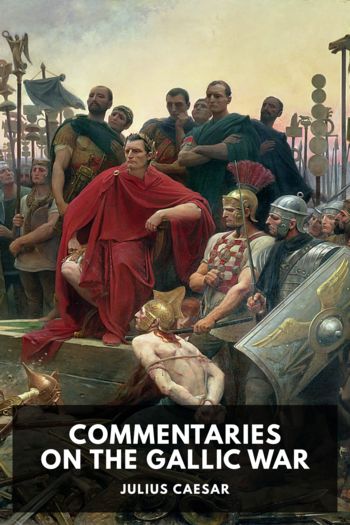Fateful Lightning: A New History of the Civil War & Reconstruction by Allen Guelzo (icecream ebook reader txt) 📗

- Author: Allen Guelzo
Book online «Fateful Lightning: A New History of the Civil War & Reconstruction by Allen Guelzo (icecream ebook reader txt) 📗». Author Allen Guelzo
Under British rule, nearly all white American colonists who owned their own farm or merchandise had servants of various sorts, although servant was a term that included everything from wage laborers to outright slaves. Slavery was part of this overall use of servant labor, and it persisted in all parts of the American colonies up until the American Revolution and beyond. As late as 1800, two-thirds of New York’s black population was enslaved, and the legislation that eventually freed them was linked to a timetable that kept some black people in bondage until the beginning of the 1850s. There were still 1,488 slaves in New England in 1800, and Rhode Island and Connecticut possessed a smattering of slaves as late as 1810; Pennsylvania had some slaves living within its borders in 1830; in New Jersey, there were still eighteen lifetime black “apprentices” when the Civil War broke out.76
Had slavery remained a legal and economic force in every northern state and survived in significant numbers, then slavery would still have posed a moral problem to the Republic. It would have been a problem that every state shared, though, and it never would have developed into a strictly sectional issue, fanning animosities between states in which slavery was legal and those in which it was not. It might have been dealt with as an object of social reform, not civil war, and (as Abraham Lincoln once speculated) might have been gradually phased out of American life, with assistance and compensation to owners, by about 1910.77
But slavery did not remain a national institution. Instead, it became a sectional one. Apart from the small pockets of slaves that survived in the North in the early nineteenth century, slavery gradually became a dead letter north of the famous Mason-Dixon Line and the Ohio River. This disappearance has often been explained as a result of climate and soil: the North’s climate was too cold to grow cotton, and Northerners felt none of the enthusiasm Southerners felt for the explosive growth of cotton agriculture in the nineteenth century—and therefore the North had no need of slaves. “Because the climate of New England was healthful, and the white man could labour beneath its sun, and no pestilence drove him from its marshes,” black slavery disappeared, wrote Jonathan Wainwright, an Episcopal clergyman in New York City. (He did not intend this as a compliment to New England, though: “Had the banks of the Connecticut been rice meadows, its uplands the soil for cotton, and its summer climate fatal to all but the African race, the African race would, in all human probability, still be in bondage among us.”)78
Instead, the North turned to factory-based manufacturing, which could afford to dispense with a large permanent labor force and get along with a smaller, wage-paid labor supply. Beginning in 1813, when Francis Cabot Lowell built the first cotton textile factory (from plans stolen from British textile manufacturers), the old Northeast sprouted textile mills and manufacturing operations, employing 1.3 million workers. As early as 1826, Pennsylvania’s Chester County already had fourteen woolen factories and thirteen cotton mills, and by 1860 there were forty-nine mills and workshops along just one five-mile stretch of the Connecticut River in western Massachusetts. The coming of the mills to the cold and stony Northern states left only the cotton fields of the South as a viable home for slavery. By the time slavery began to be seen as a moral problem in the United States, it had become a Southern problem as well.
Yet the climate-and-soil argument cannot carry all the weight of explaining why the North lost slaves while the South multiplied them. After all, neither the climate nor the soil of much of the Northern states differed all that much from the climate and soil in a good deal of the slaveholding South. Even if cotton could not be easily grown in Connecticut, wheat could, and wheat was being harvested by slave labor in both Kentucky and Tennessee. Wheat, in fact, had been planted and harvested by slave labor in Pennsylvania as early as the 1680s, and 20 percent of all the manual labor in Quaker Philadelphia in the 1750s was being performed by black slaves. As Southerners themselves had begun to realize, there was no reason why slave labor could not run the mills as easily as hired white labor.79
The reasons for slavery’s disappearance in the North also have to be looked for in a number of more or less intangible sources. One of the least intangible of these causes was the American Revolution. In an effort to weaken American resistance, British occupation forces frequently lured “all indented Servants, Negroes, or others … willing to bear arms” to desert their masters and enter British lines, where freedom was promised as a reward. More often than not, that promise was honored in the breach. Slaves who ran away in Pennsylvania to join Sir William Howe’s occupation of Philadelphia or who ran away in Virginia to join Lord Dunmore’s “Ethiopian regiment” found themselves dumped by their erstwhile allies in Nova Scotia or sold back into slavery in the Bahamas. In May 1787, the





Comments (0)